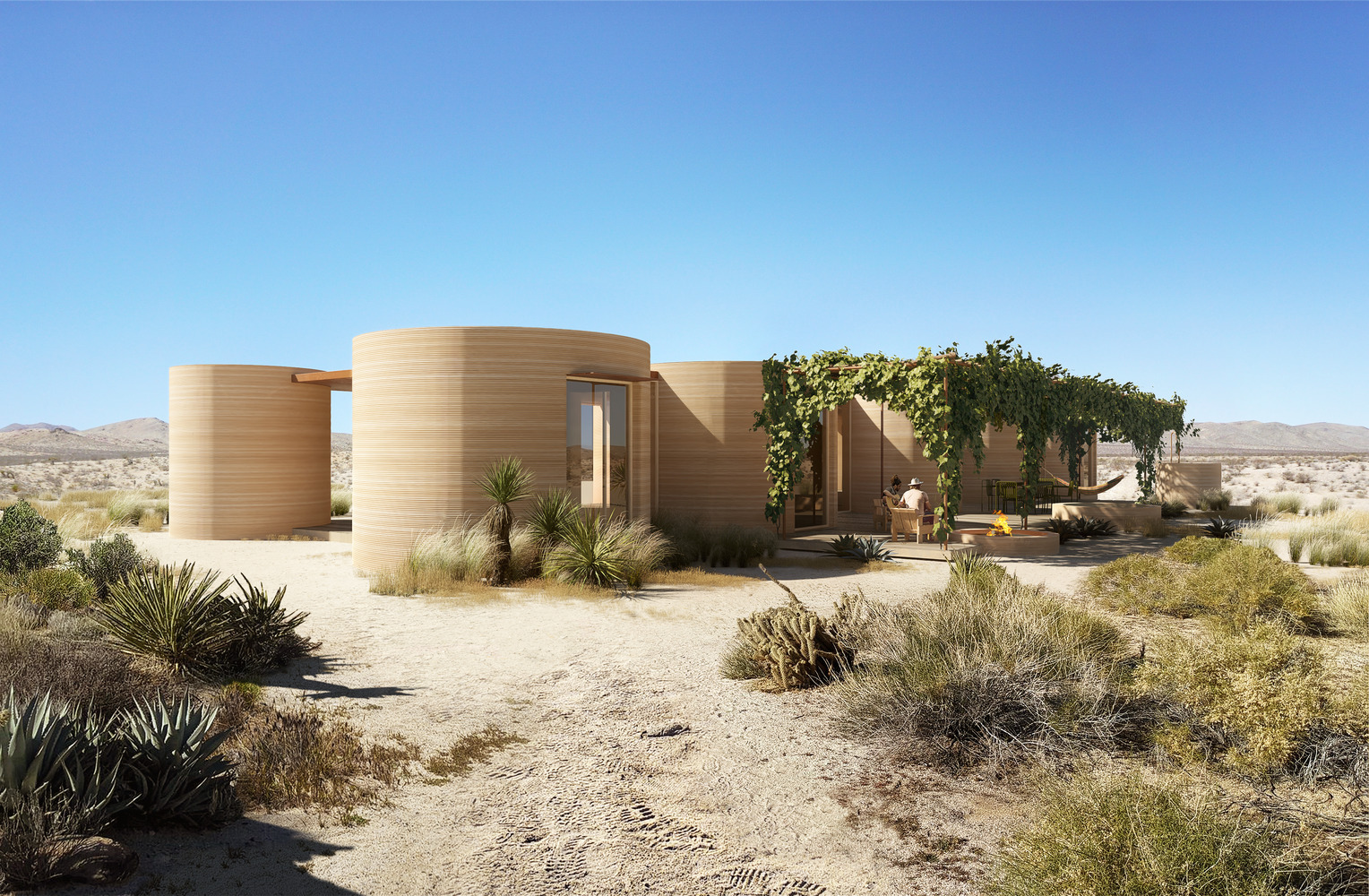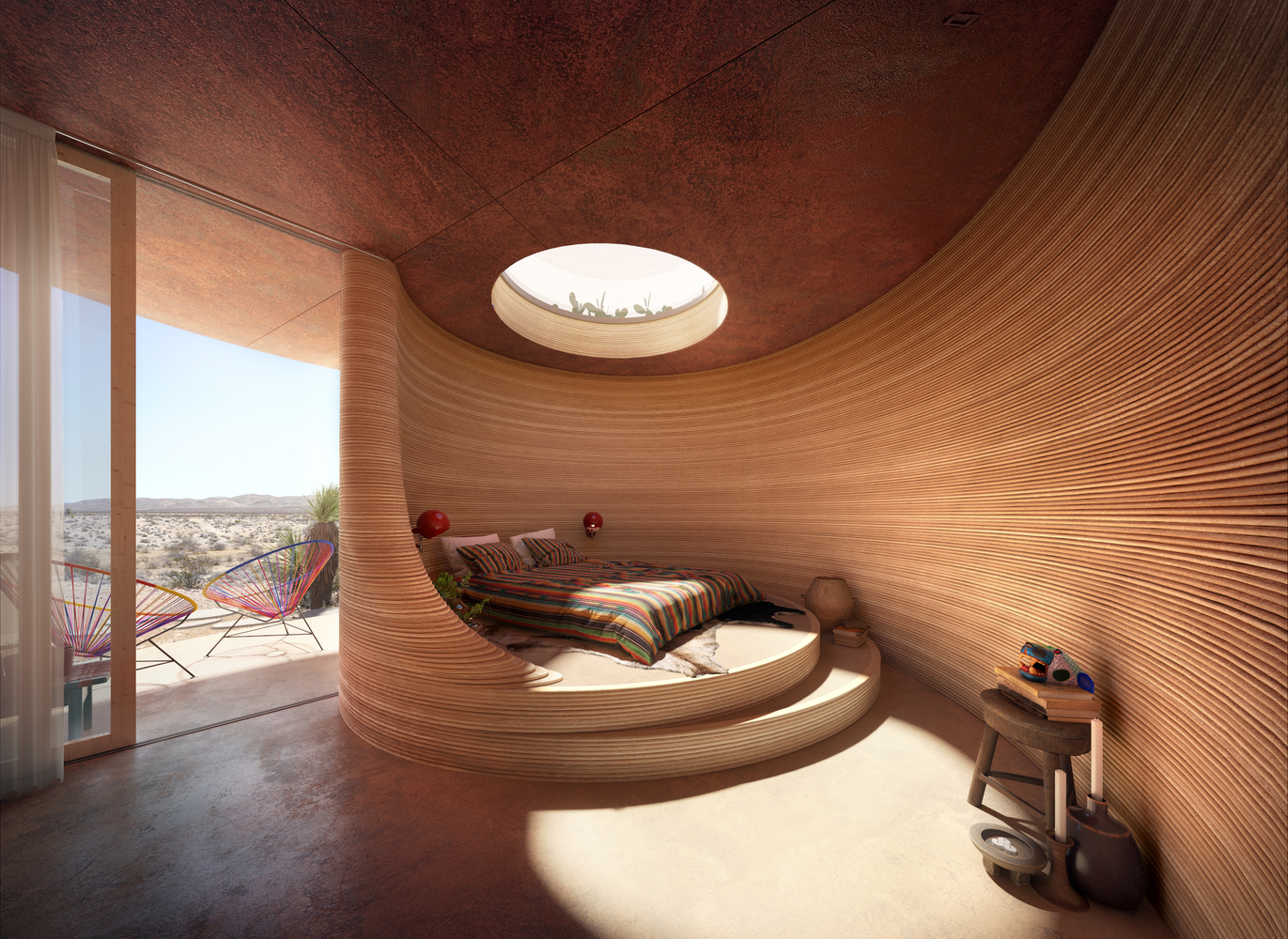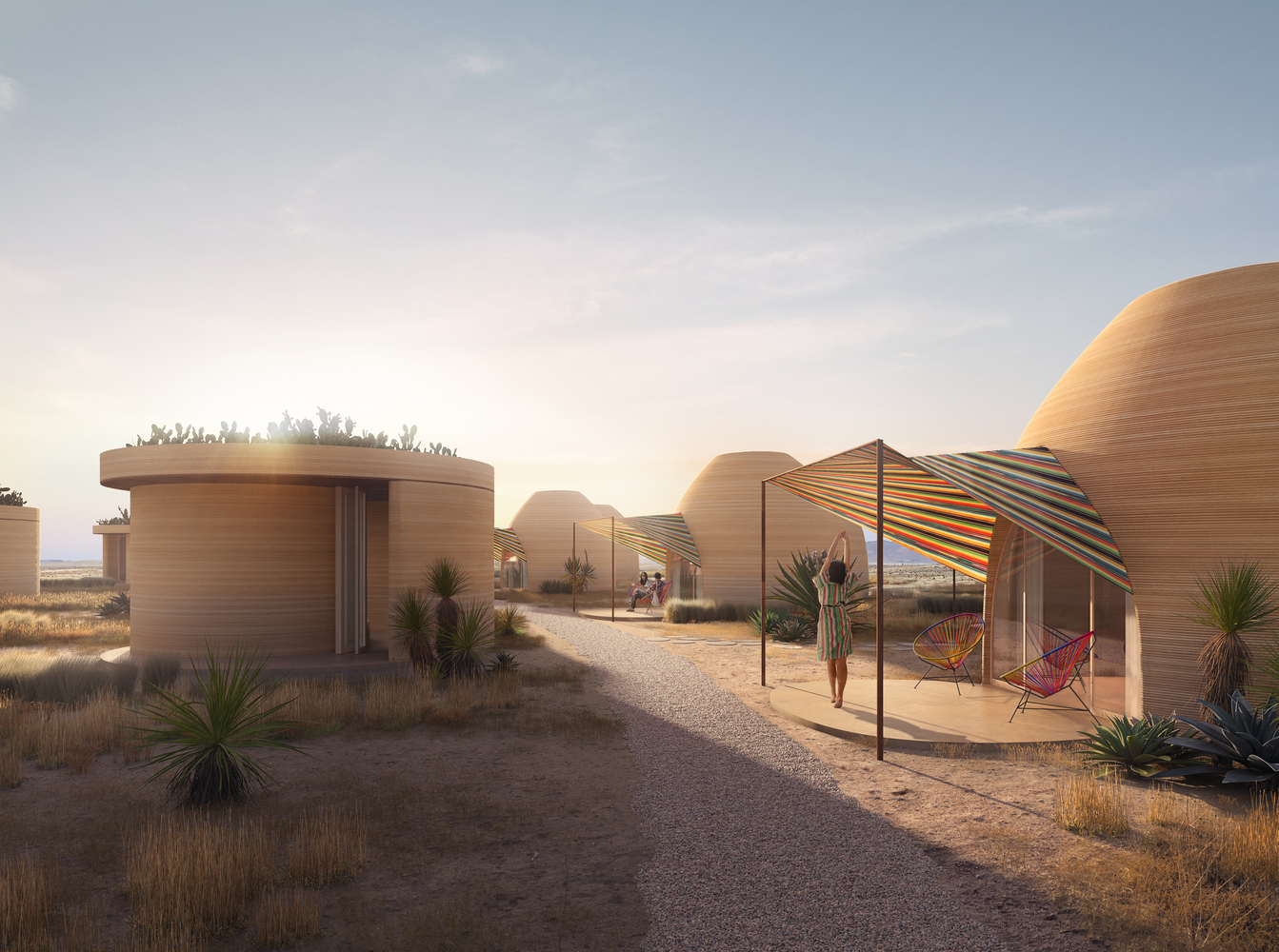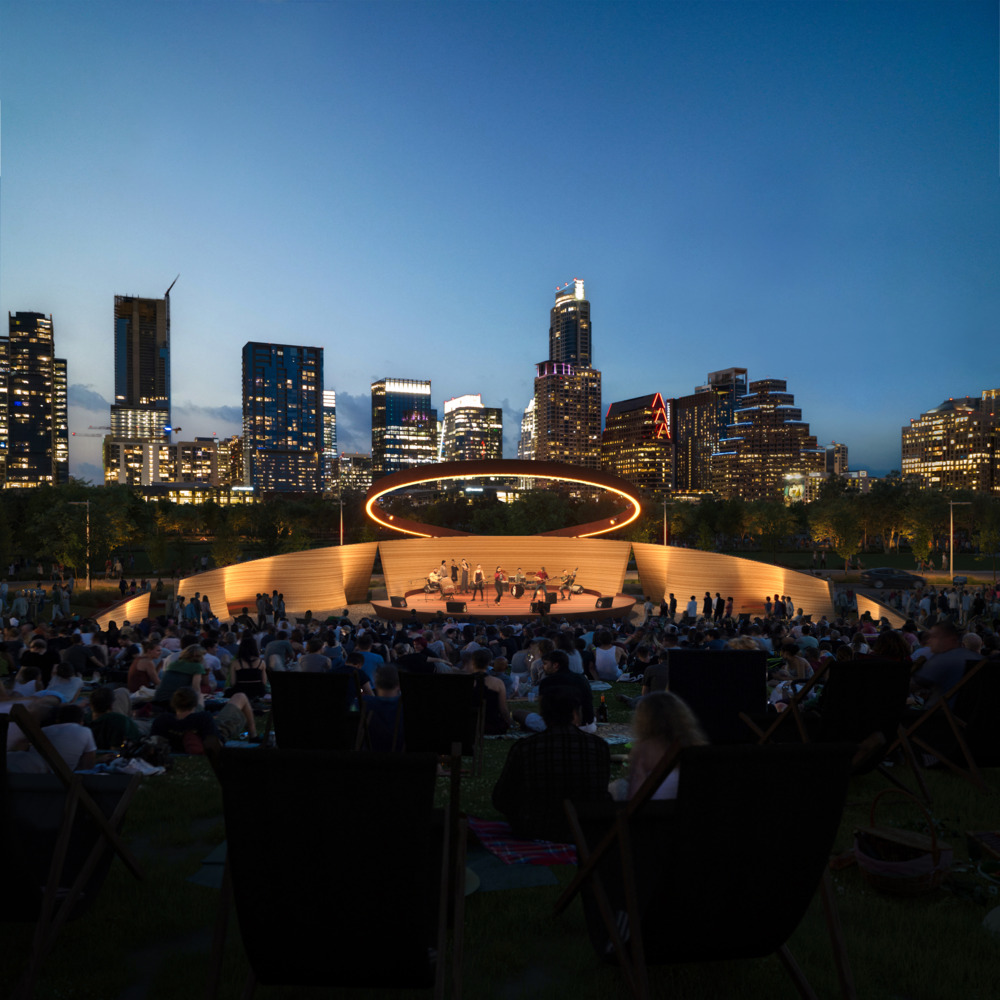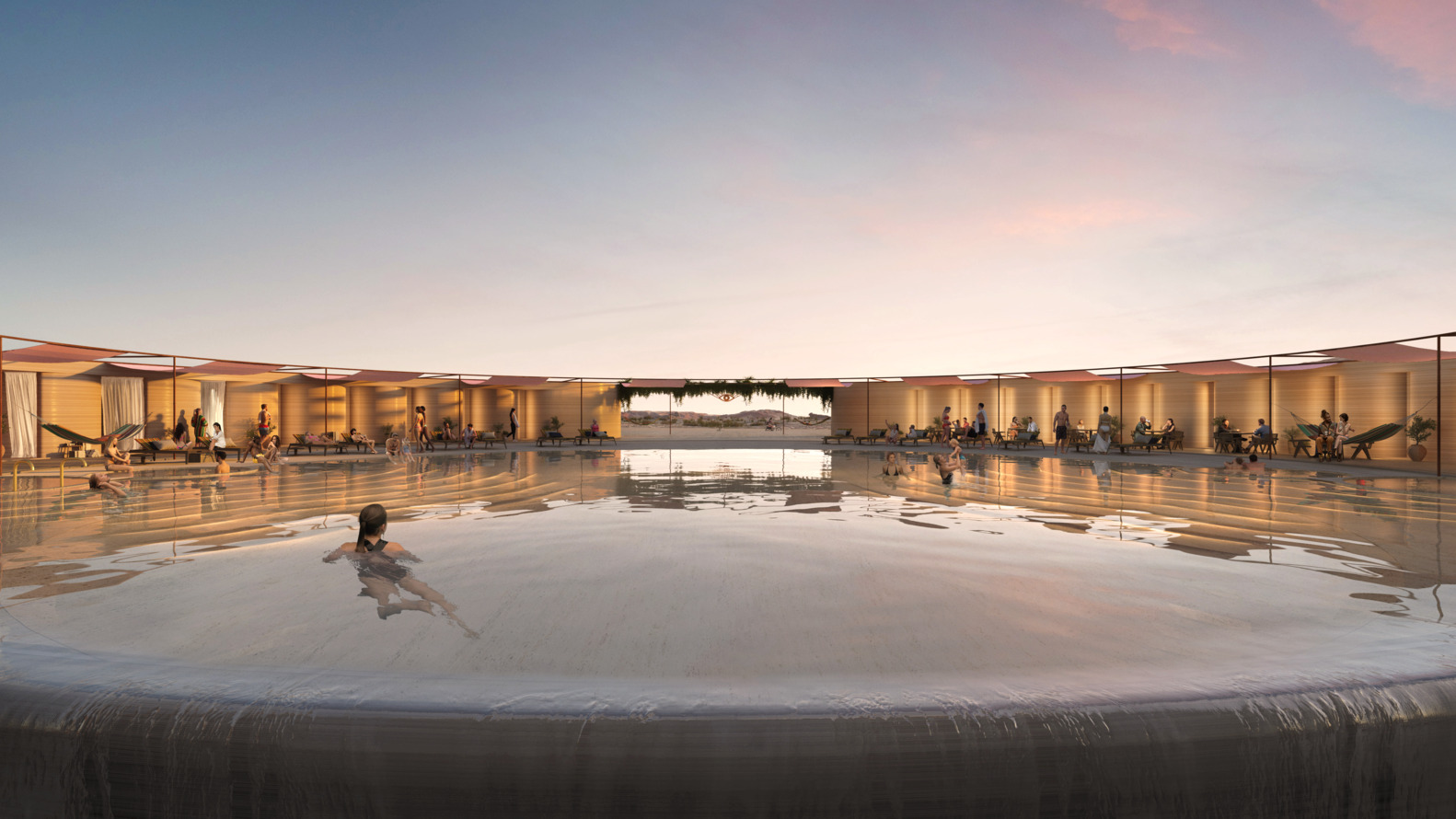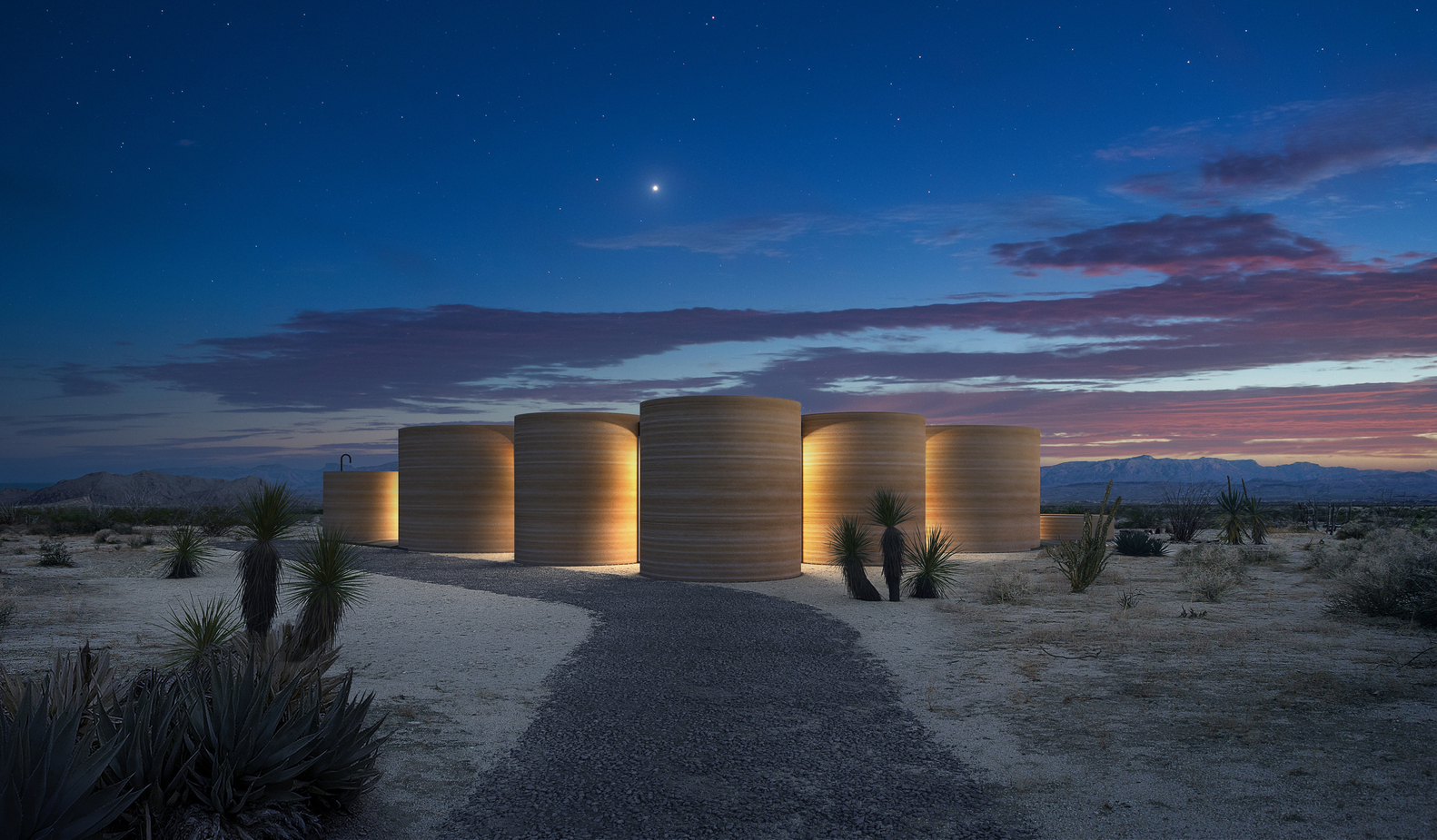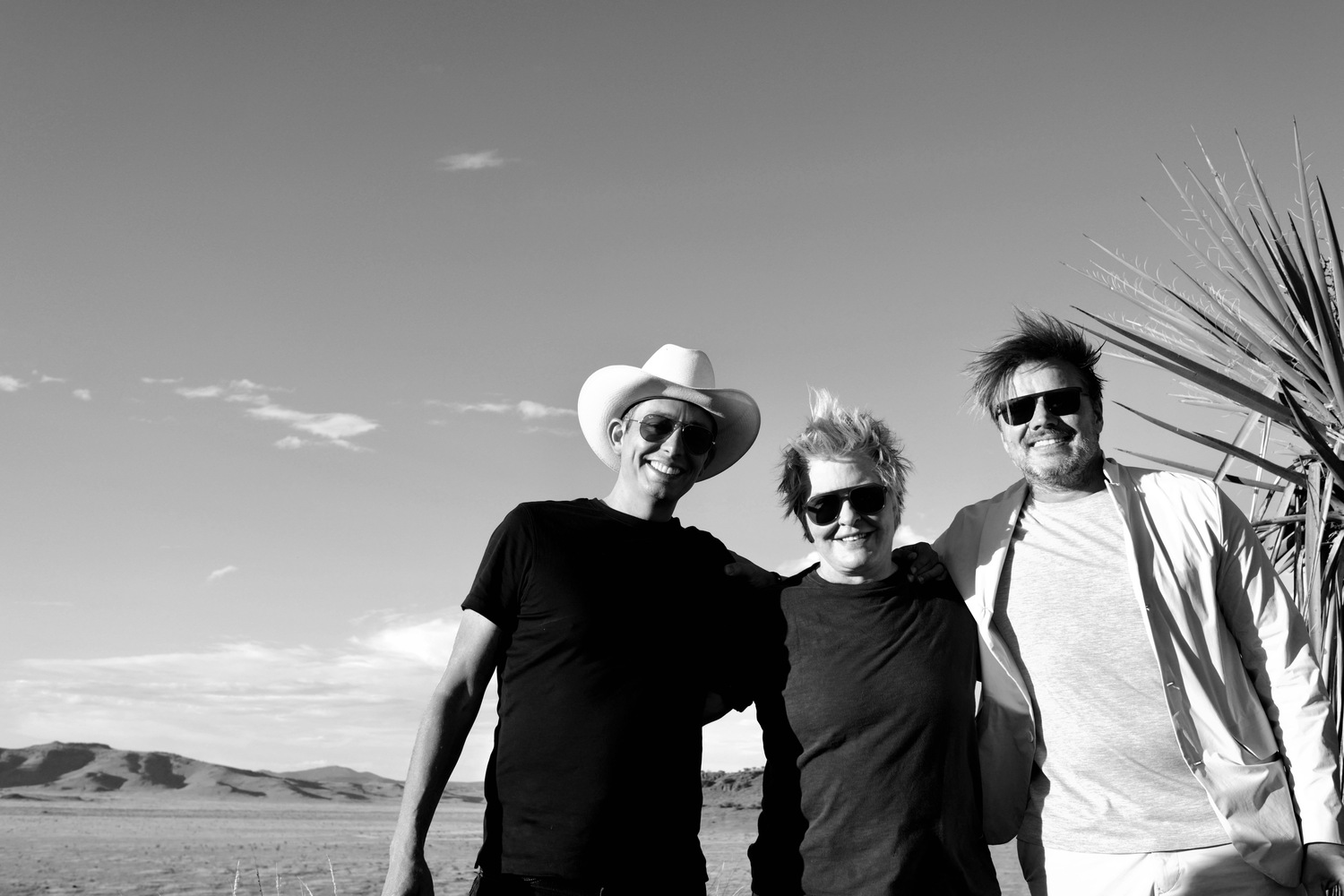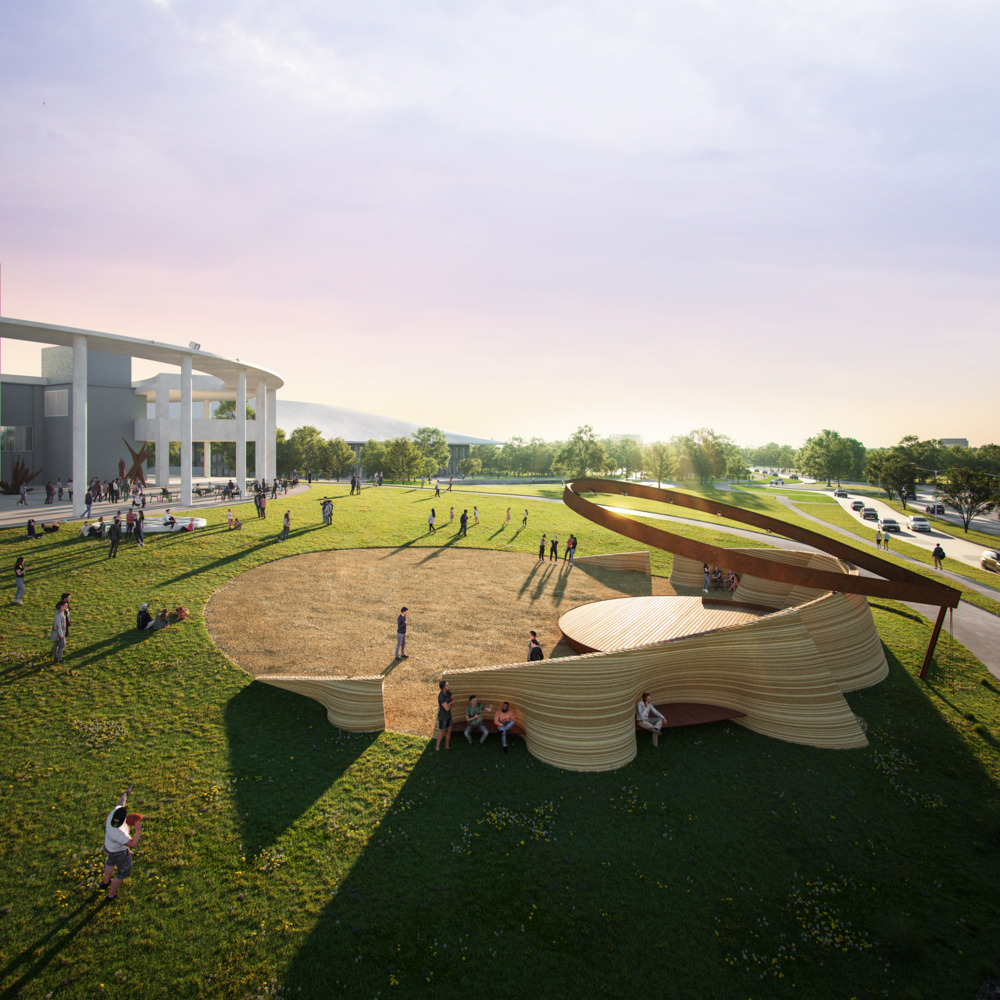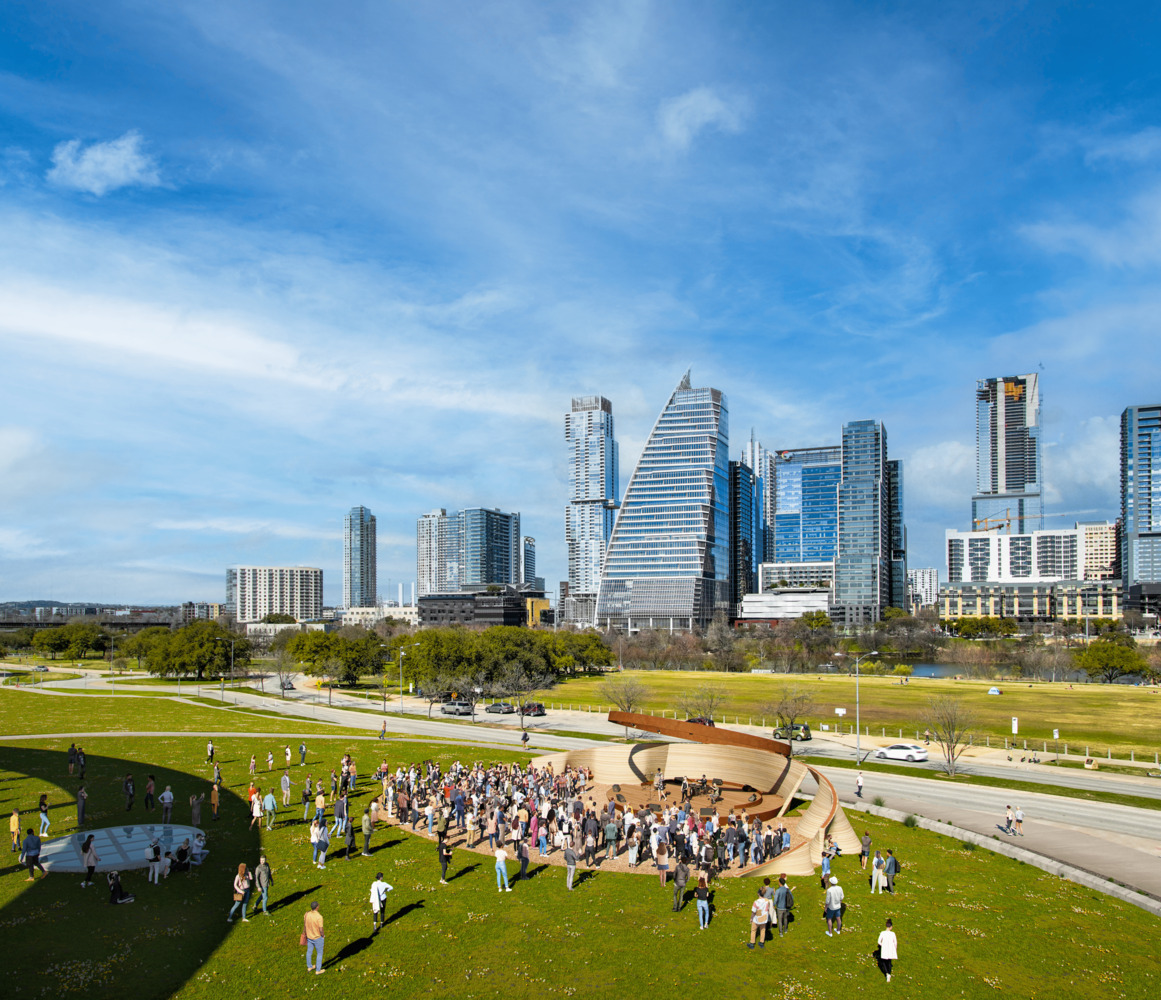Hotelier Liz Lambert commissioned Danish design studio BIG and 3D-construction company ICON to develop El Cosmico, a desert campsite and dwelling project in Marfa, Texas. Over 60 acres in a small community in west Texas will be devoted to the Lambert development, including a hotel with modern conveniences and long-term housing. Inspired by the wilderness and BIG’s work with NASA, the team used ICON’s 3D-printing building apparatus to build constructions. The project is scheduled to get underway in 2024.
“After delving into the details of building on Mars and the moon, we concluded that modular production techniques like 3D printing would be necessary. We’ve also sketched some photos showing how the features of 3D printing, when applied to Mars, and the red intonations, produce something similar to Vernacular architecture.” Big’s founder, Bjarke Ingels, made the following statement
“This texture, made possible by 3D printing’s concrete mixture substance, made me think of the hand-cut teeth ornamentation found on earthen homes.” He continued
El Cosmico Marfa
Liz Lambert claims that El Cosmico plans to evolve into more than just a hostel by providing guests with opportunities to learn new skills, observe artworks, and witness cutting-edge technologies’ effects. While modern building methods make these structures feasible, 3D printing also uses some of the oldest construction methods.
The relationship between the high desert environment and cosmic entities inspired the architects behind the reimagined El Cosmico hotel and the surrounding community. Architects have created domes and other buildings using ICON’s technology with organic forms like soft curves and rounded corners.
The institution’s mission to investigate the relationship between artistry, environment and leisure is intended to be carried forward in this endeavor. The initiative hopes to meet the increasing demand for housing in Marfa by providing 3D-printed low-cost dwellings.
“We have only scratched the surface of the genuinely original and varied building plans drawn up attainable by 3D printing. The excitement of ICON comes from placing our technology in the hands of talented artists and seeing how they use it.” As ICON’s co-founder and current CEO, Jason Ballard, put it.
In addition to the press release, ICON and BIG have collaborated with Austin, Texas’s Long Center for the Performing Arts, to build the world’s first 3D-printed performance pavilion. The structure’s form evokes similarities to El Cosmico’s architectural style. What has emerged is a singular work of sculpture, an outdoor patio spot in downtown Austin, and a potential cultural monument and community social spaces.
Vacationers aren’t the only ones who will benefit from this 3D-printed El Cosmico initiative; the developers also hope to gauge public interest in 3D-printed low-cost housing in the area. Indeed, the United Kingdom, the United States, Kenya, and South Africa have other ventures that create residences using this technique. The projects use 3D printing with concrete injection, which reduces construction time and expenses while producing less waste than conventional techniques.
There will also be several homes on the land, each constructed from interconnected tubes. A circular design concept will also be used for the estate’s pool, ringed by a cluster of round cottages made with 3D printing technology.
In the words of Bjarke Ingels, “We remain a little bit at the beginning of 3D printing at the spectrum of structures, yet there’s an extraordinary chance to discover what architectural styles can emerge from this new horizon. The entire collection of buildings we designed for El Cosmico in Marfa is a preliminary investigation into this new architectural language.”
©ICON, BIG for El Cosmico
©ICON, BIG for El Cosmico
©ICON, BIG for El Cosmico
3D Printed Performance Pavilion. ©ICON, BIG for El Cosmico
©ICON, BIG for El Cosmico
©ICON, BIG for El Cosmico
Liz Lambert, ICON Jason Ballard, BIG Bjarke Ingels. ©ICON, BIG for El Cosmico
©ICON, BIG for El Cosmico
©ICON, BIG for El Cosmico


